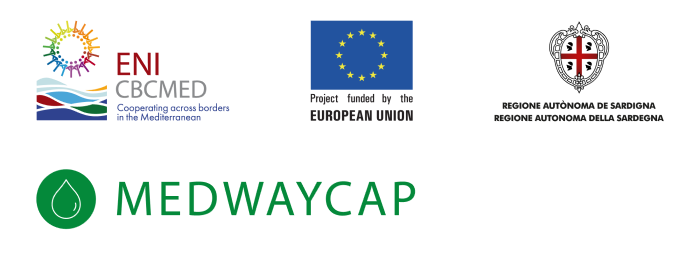First Name:
Ahmed
Last Name:
Ghrabi
Type of BP
Implementation & management solutions
Typology of Non- Conventional Water Resources (NCWR) What kind of NCWR do you deal with ?:
Rainwater (RW), Greywater (GW), Black Water (BW)
What are the challenges raised by your Best Practice?
Difficult access to water
How could you describe your Best Practice?
It presents one case of a wastewater management approach in a rural area. The design and the implementation of the solution have been developed in close consultation with the stakeholders and national authorities. The objectives are (i) to solve the problems of the uncontrolled wastewater discharged into nature without treatment, and (ii) to set up a robust solution to be recommended for application in a rural school in Tunisia, devoid of a sanitation system and characterized by limited financial resources for water supply and sanitation services. Several types of equipment to save water (push-button taps, waterless urinals, rainwater harvesting) are set up. The sanitation system consists of a septic tank followed by a horizontal subsurface flow constructed wetland. The treated wastewater are used in the irrigation of the garden.
Please describe your Best Practice in 5 keywords?
constructed wetland, rainwater harvesting, rural school, sanitation, water saving
Please provide any links to useful documentations (including website)presenting your Best Practice
In which area has your Best Practice been implemented ?
Rural area
Best Practice location implementation (Country)
Tunisia
Localisation
POINT (10.04942 36.94852)
Who are the beneficiaries and/or the target group of your Best Practice ?
Other (Please specify below)
Other beneficiaries
primary school
f the Best Practice has been implemented within a partnership, who were your partners ?
The sanitation system of primary school was developed and erected in the project ‘Sustainable Concepts towards a Zero Outflow Municipality (Zer0-M)’ and the monitoring was conducted in the FP4BATIW project (www.fp4batiw.eu), both funded by the European Union in the frame of MEDA Water and FP7, respectively
Have you involved stakeholders?
No
What are the obstacles to implementation of Best Practice ?
Lack of public acceptance of water reuse
Did you receive funding for the research and development of the proposed BP?
Yes
Please indicate the source of funding
EU funding
Do you have or know any platform of sharing Best Practice that you would like to link to this inventory platform?
No
Does your Best Practice contribute to an innovation? If so, please provide a short description of the innovative component
The results show the feasibility of the system composed of a septic tank and horizontal subsurface constructed wetland. Regarding the high removal rates obtained, the final quality of treated effluent could be sufficient for garden irrigation. Rainwater could provide an alternative as well as the installation of water-saving devices. The pilot activity will also build and reinforce the capacity building and expertise related to the implemented techniques under real conditions. This solution can be recommended for wide application in rural schools in Tunisia and could be replicated in similar areas and countries in order to save water and efficiently treat domestic wastewater avoiding direct discharge of untreated wastewater.
What technolog(ies) and/or tool(s) has(ve) been used for your Best Practice ?
• Implementation of several types of equipment to save water;, • Set up waterless on place of a conventional urinal, • Implementation of push-button taps for flushing toilet, • Equipment of others taps by push-button (drinking and washing basin), • Equipment of others taps by push-button (drinking and washing basin), • Equipment of others taps by push-button (drinking and washing basin), • Set up a local system of sanitation
Please indicate the acronyms of used &/or developed technologies/Tools
CW: Constructed wetland
Please indicate the TRL associated with your Best Practice
TRL7 : System prototype demonstration in operational environment
Flow rate (m3/day)
1.60
What is the necessary area to implement your Best Practice (m2) ?
200.00
Salinity (mg/l)
3.03
Suspended solids SS (mg/l)
1141.00
COD (mg/l), Chemical Oxygen Demand
1153.00
BOD5 (mg/l)
475.00
Phosphorus content (mg/l) (orthophosphates, other)
41.48
Nitrogen content (mg/l)
282.58
Pathogens
3.1*10^6
Flow rate (m3/day) of treated NCW
1.60
Efficiency (BOD5 % Removal)
96.40
Efficiency (COD % Removal)
86.70
Efficiency (SS % Removal):
93.00
Other (% Removal)
3.70
Comment : Other (% Removal)
Fecal coliform 3.7 LOg Unit
Toilet Flushing, Garden Irrigation
What is the quantity of treated NCW generated by the Best Practice that has been sold to the user (m3/day) ?
1.60
Is your Best Practice economically viable ?
10
Is your Best Practice environmentally sustainable ?
10
Please indicate the other various social impact of your Best Practice :
Preservation of living environment, Improvment of health conditions
What the improvement is induced by your Best Practice Solution?
Cost reduction, Reduction in the discharged quantity (zero discharge target), Increase in reuse possibilities
To which Sustainable Development Goals (SDGs) your Best Practice contributes?
SDG6: Clean Water and Sanitation
